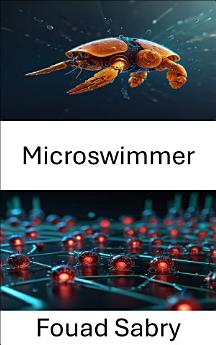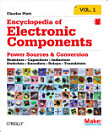Microswimmer: Design and Control of Bioinspired Nanorobots
About this ebook
Chapters Brief Overview:
1: Microswimmer: This chapter introduces the concept of microswimmers and their significance in the realm of nanorobotics.
2: Soft Robotics: Explores the principles of soft robotics and its synergy with microswimmer technologies.
3: Selfpropulsion: Discusses how microswimmers generate their own movement, a critical feature for autonomous robots.
4: Motility: Focuses on the mechanisms that allow microscopic robots to move in complex environments.
5: Protist Locomotion: Draws parallels between biological protists and the selfpropulsion techniques of microswimmers.
6: Molecular Machine: Examines molecularscale machines and how they contribute to the functionality of microswimmers.
7: Bradley Nelson: Highlights the work of Bradley Nelson and his pioneering contributions to microswimmer development.
8: Nanorobotics: Provides a comprehensive look at the field of nanorobotics and its potential applications.
9: Robotic Sperm: Discusses the use of robotic sperm as an example of targeted, microscopic robotic technology in medicine.
10: Collective Motion: Explores how multiple microswimmers can work together, demonstrating the power of collective motion.
11: Selfpropelled Particles: Investigates the phenomenon of selfpropelling particles in microswimmer applications.
12: Active Matter: Delves into the behavior of active matter and its relevance to the function of microswimmers.
13: Microfluidics: Covers the use of microfluidics in controlling and manipulating microswimmers within fluids.
14: Scallop Theorem: Introduces the scallop theorem and its implications for the design and movement of microswimmers.
15: Nanomotor: Focuses on the critical role of nanomotors in the functioning of microswimmers.
16: Chemotaxis: Examines the phenomenon of chemotaxis and its application to navigating environments with microswimmers.
17: Metin Sitti: Highlights the contributions of Metin Sitti to the development of microswimmer technologies.
18: Microbotics: Explores the field of microbotics and its intersection with nanorobotics in advancing autonomous systems.
19: Biohybrid Microswimmer: Investigates biohybrid microswimmers, blending biological materials with robotics for enhanced functionality.
20: Bacterial Motility: Discusses bacterial motility and its relevance in designing efficient microswimmers.
21: Runandtumble Motion: Explores the "runandtumble" motion, a key concept in bacterial motility and its application in robotics.











